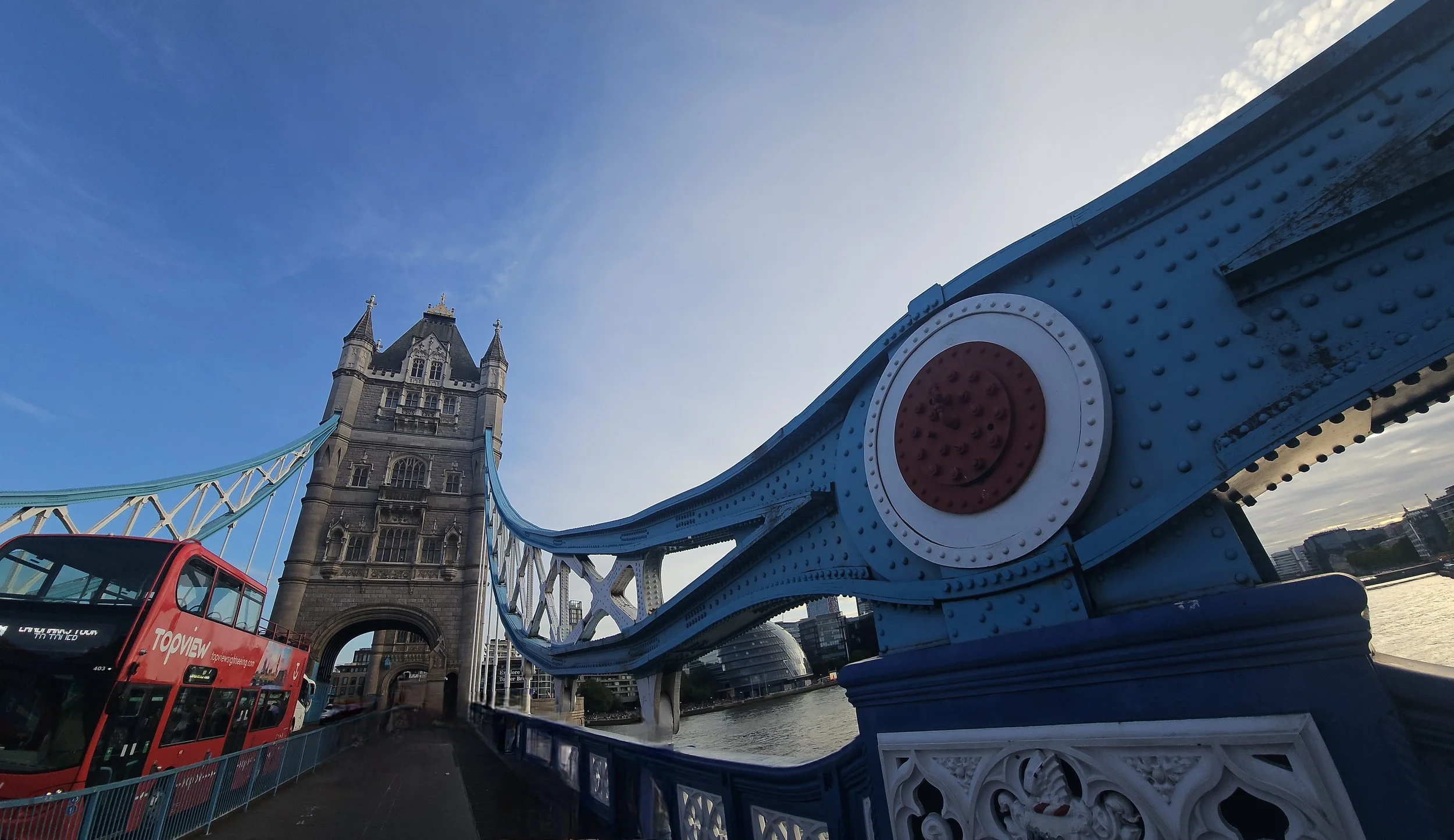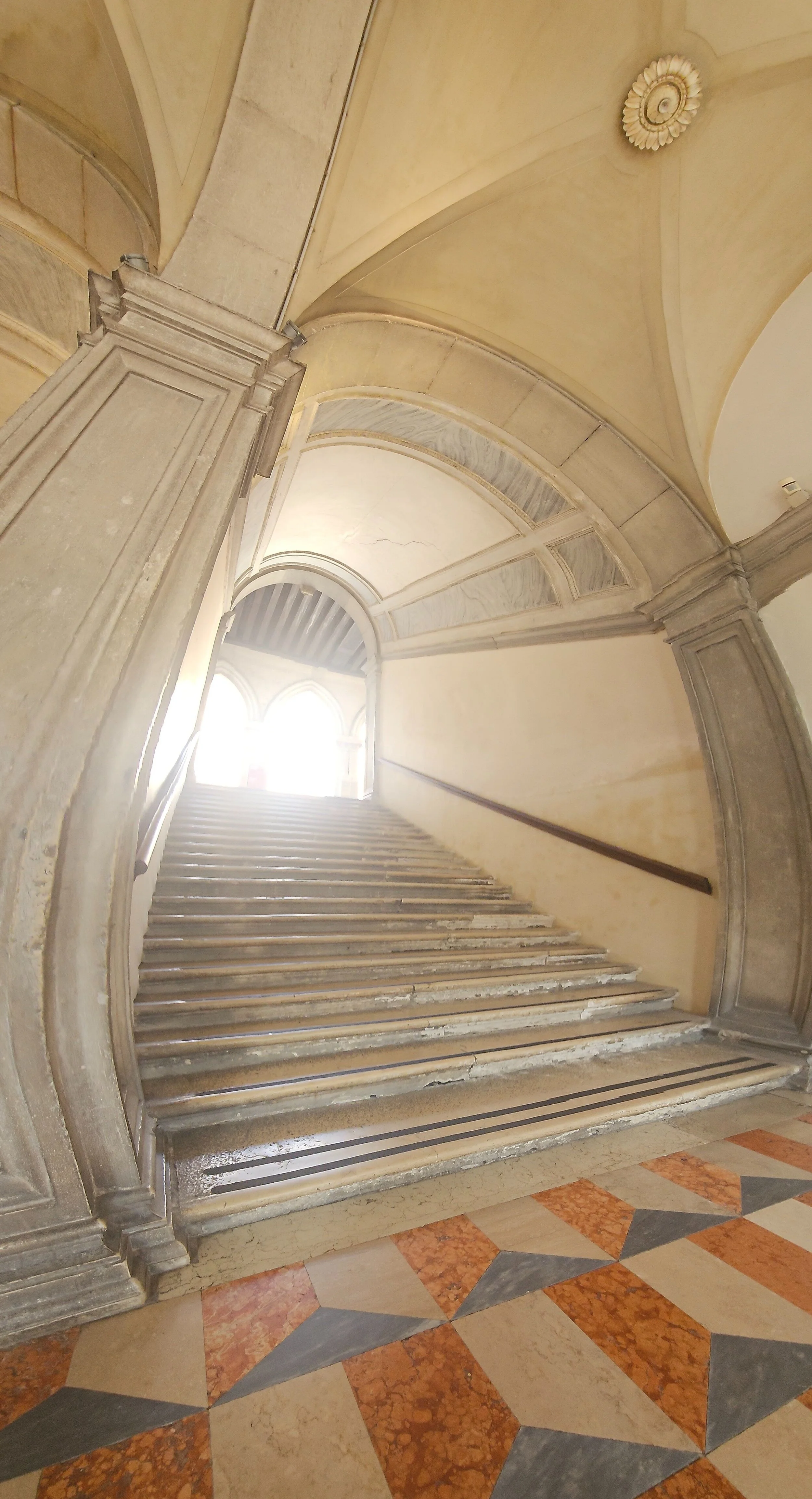Panoramic Mode
Please note that panoramic images, in particular, are best viewed on a full screen. If you find yourself viewing this page on your smart phone, you may wish to turn the phone in a horizontal position to appreciate the wide images.
Dunedin, New Zealand: Dunedin Railway Station. The panoramic setting allows us to capture the beauty of the architecture and the gardens in one image.
📸 Panorama Mode on Android and iPhone
What It Is and How to Use It
Both Android and Apple smartphones come with a Panorama mode in their default camera apps. This feature allows users to take wide or tall images by moving the camera across a scene while the camera stitches multiple frames into a single, sweeping photo.
Whether you're capturing a mountain range, a large group of people, or an interior room, Panorama mode helps you fit more into a single photo without needing a wide-angle lens.
Brugge, Belgium: A modest artist’s gallery comes alive in the panoramic above, showcasing not only the beautiful work but the charm of the space itself with warm woods and distinctive windows.
📷 Panorama Mode on Android Phones
🔍 How to Find It
Open your Camera app.
Look for a “More” or “Modes” section — this may be a button or a swipeable carousel.
Tap “Panorama” to activate it.
🧭 What the Icon Looks Like
A rectangle or screen-like shape with a curved arrow above or across it.
The arrow often curves left to right, representing the direction of motion.
The icon may resemble a camera with a rainbow arc overhead.
🎯 How to Use It
Tap the Panorama mode.
Hold your phone horizontally for a horizontal panorama.
Tap the shutter button, then move your phone steadily from left to right (or right to left, depending on the arrow).
Follow the on-screen guide to stay aligned.
Tap the button again or wait for it to stop automatically when it reaches the end.
📐 Movement Options
Most Android phones allow both horizontal and vertical panoramas, depending on how you hold the phone.
For a vertical panorama, hold the phone vertically and pan upward or downward.
London England: The unique architecture of the Tower Bridge is highlighted with the use of panoramic view. In one panoramic shot, the image below, we captured a standard wide view; however, in the image above we started the pan with a specific focal point—the red and white dot. The bold red of the dot is echoed beautifully by a red double-decker bus crossing the bridge, creating a subtle yet striking visual connection.
🍏 Panorama Mode on Apple iPhones
🔍 How to Find It
Open the Camera app.
Swipe left or right on the screen until you find “PANO.”
Tap the shutter button when you're ready.
🧭 What the Icon Looks Like
The label “PANO” is prominently displayed.
A graphic shows a straight horizontal arrow moving left to right over a guiding line.
🎯 How to Use It
Hold the phone vertically (portrait orientation). Apple’s default Panorama captures horizontal wide shots.
Line up the arrow with the on-screen guideline.
Tap the shutter and slowly pan from left to right.
To reverse direction (right to left), tap the arrow before starting.
To stop early, tap the shutter button again.
📐 Special Notes on Orientation
iPhones do not allow panorama mode while holding the phone vertically for a vertical sweep.
However, if you hold your iPhone horizontally, you can still pan upward or downward to capture tall vertical panoramas — perfect for trees, skyscrapers, or murals.
Istanbul, Turkey: Compare the image above which was shot horizontally as a panoramic looking overhead with the image below shot as a vertical panoramic. the vertical image allows the photographer to capture the shadows and the umbrellas simultaneous, creating a more unexpected image.
🎨 Creative Panorama Ideas (Both Platforms)
Panorama mode isn’t just for landscapes. Here are some fun, artistic uses:
S-curve pan: Instead of a straight line, gently curve the camera’s motion into an S-shape to create abstract, flowing images.
C-shaped pan: Sweep in a gentle arc to warp buildings or roads into dynamic shapes.
Intentional misalignment: Move the phone quickly or jerkily for a glitchy, surreal effect (good for experimental shots).
Clone effect: Have a person move to different spots as you pan — the result shows them multiple times in one photo!
Spiral or zig-zag (advanced): Combine up/down and side-to-side motions to make wild, abstract panoramas.
⚠️ Creative panning works best when your subject or environment has consistent lighting and minimal fast-moving elements.
Dunedin, New Zealand: In this image we wanted to draw attention to the gates as a welcoming element to the First Church of Otago. By electing to create a panoramic while positioned in front of the gates we did exactly that!
New Zealand: The scene above was captured using panoramic mode. The location is the famous filming site of The Lord of the Rings. To achieve this shot, we traced a wide arc from left to right, repeating the motion several times until this image stood out as the winner.
Osaka, Japan: Although the original image effectively captures the store front with giant octopus, the panoramic immerses the viewer in the Shinsekai, a wild district in Osaka where nothing is along this vibrant street is subtle!
Cruise Ship View: By using panoramic mode in this unexpected setting, we transformed the ship’s straight railings into a dynamic V shape, distorting their form and creating a striking, imaginative image that contrasts with the actual structure in front of us.
Busan, South Korea: In the photo above the fact that there are no other elements - buildings, people, etc. - allows for a pleasing harmonious pattern of lanterns.
Kusadasi, Turkey: In the countryside of Kusadasi, near Ephesus, a workshop for talented rug makers is captured in both a standard image and then a verticle panormamic.
Istanbul, Turkey: The markets come alive in this panoramic view of the merchants and goods.
Abstracts & Effects
Panorama mode isn’t just for wide, horizontal landscapes—think outside the frame! Try using it vertically to capture towering buildings, tall trees, or even create surreal, artistic effects with intentional hand movements. Experiment with curves, tilts, and motion to turn everyday scenes into unexpected, creative compositions.
Santorini, Greece: Compare the two images above. In the first, the photo was taken in vertical panorama mode with steady hands, creating a smooth sweep from the stairs to the sky. In the second, the camera was also panned vertically—but with an intentional S-shaped hand movement, resulting in a distorted, artistic effect that warps the gate and door into abstract shapes. Note that we also did some object removal…compare the photographs and see if you can notice the small item that was removed in the abstract image.
Venice, Italy: This vertical panorama puts a creative twist on the Doge’s Palace entrance. By tilting the frame upward, the grand stairwell becomes something more artistic and unexpected—almost like stepping into a painting. It’s a fresh way to capture a familiar landmark with a bit of drama and flair.
Final Tips
Keep your hand as steady and smooth as possible for clear results.
Avoid moving objects (cars, people) in the frame unless you're experimenting.
Practice makes perfect — experiment with movement, light, and subject matter.
Return to Mode Training
“Always think long term and look at the bigger picture.”















